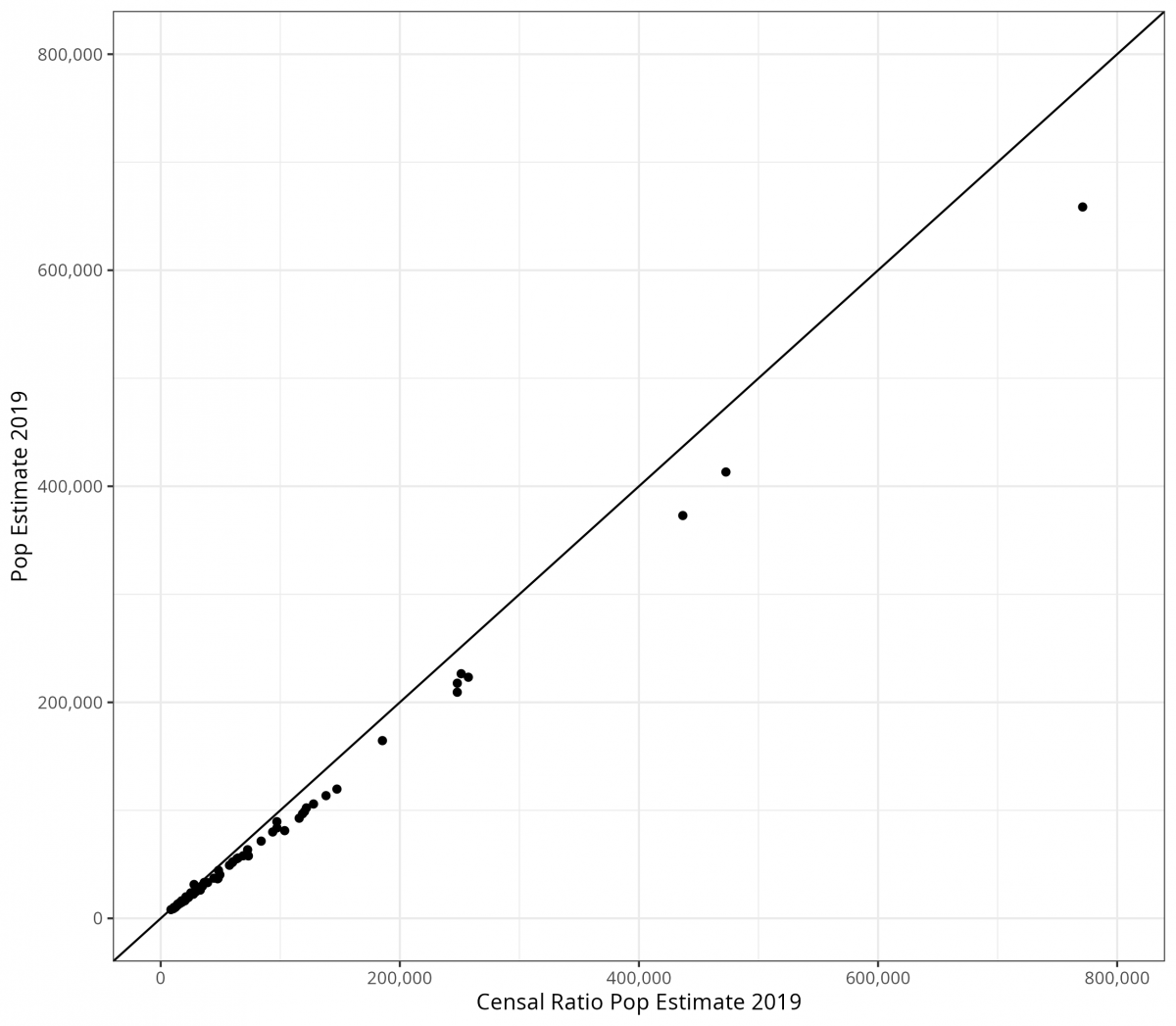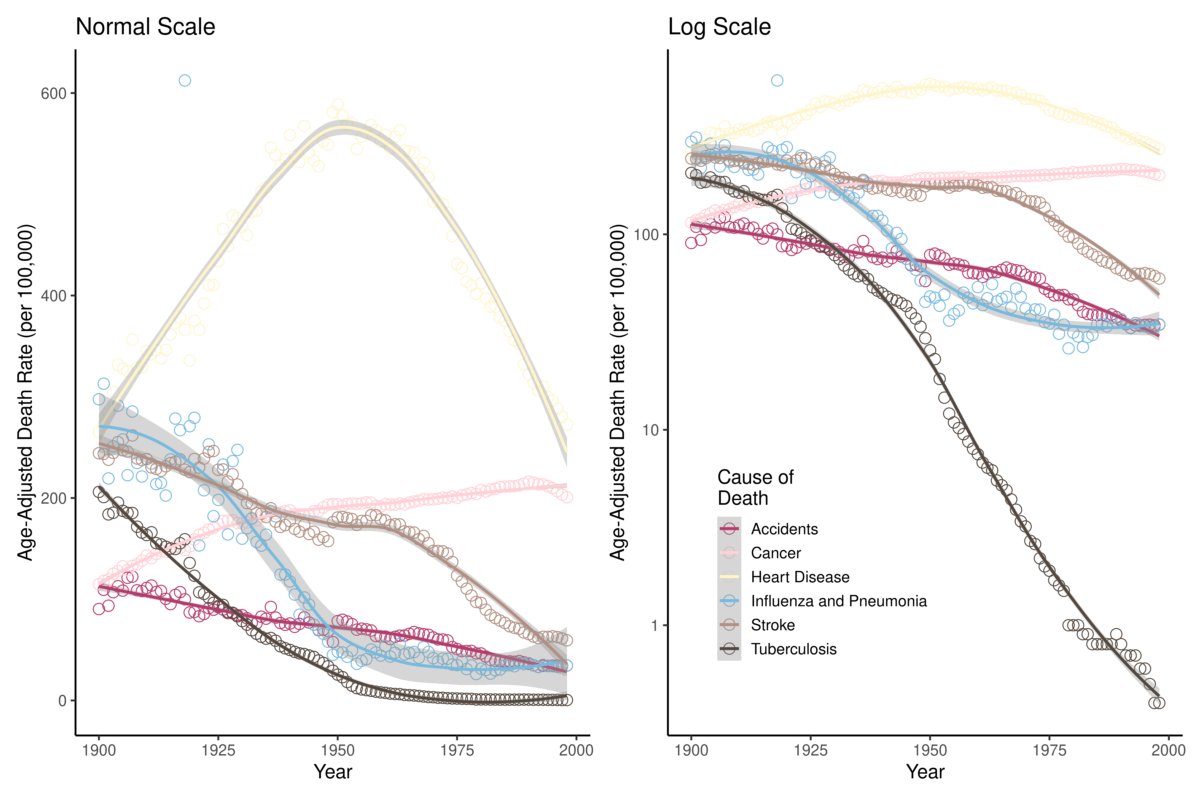Introduction Software, such as specific R packages, evolve over time, which may prevent older analysis code from working as expected. For example, default values for arguments in a function can change. Therefore, for computational reproducibility, knowing which specific R and package versions were used to run the analysis is crucial. One popular solution in R… Read More
Expanding the Lifespan of Software for Demographic Analysis with Containers: An Application of Spatial Sampling

Unlocking Population Estimation Using Readily Available Data: Applying the Simplified Censal Ratio Method

Population estimation is generally a straightforward process: any population must result from a past population number plus the births minus the deaths plus the net migration. This cohort-component method is often considered the ‘gold standard’ for population estimation (Gerland, 2014). However, the components of change (births, deaths, migrants) used to forecast a future population are… Read More
Estimating time points of significant change in cause-specific mortality: Joinpoint regression in R

INTRODUCTION Those engaged in demographic research are often interested in how and why the vital demographic processes (fertility, mortality, and migration) change in response to certain ecological, cultural, or behavioral stimuli. Today, in the midst of a global pandemic event, epidemiologists and demographers may be interested in the ability to identify points over time during… Read More



